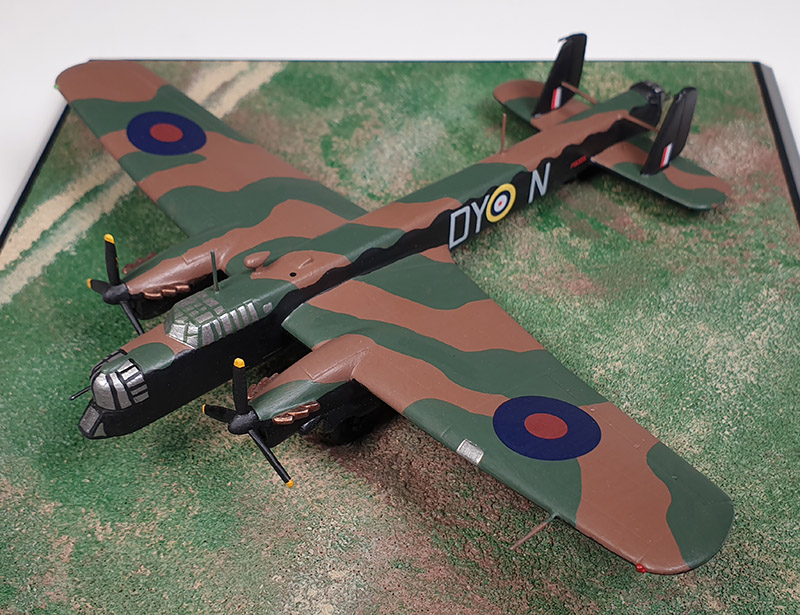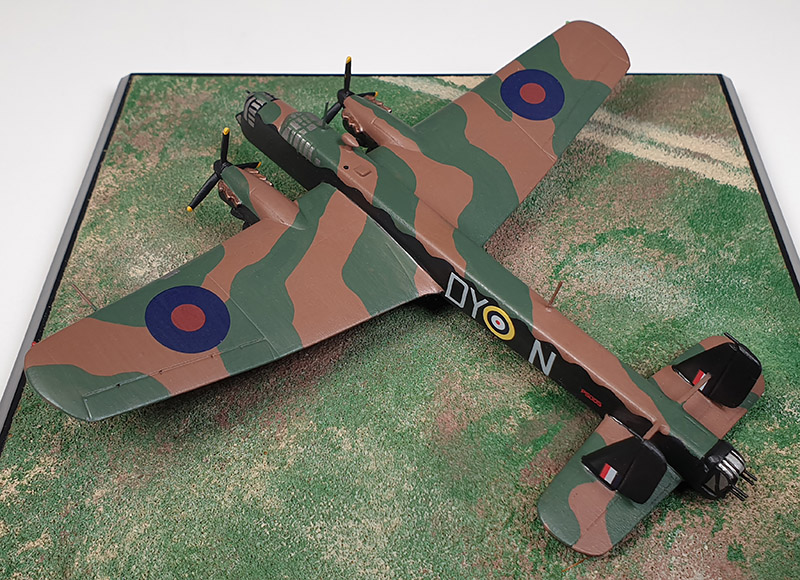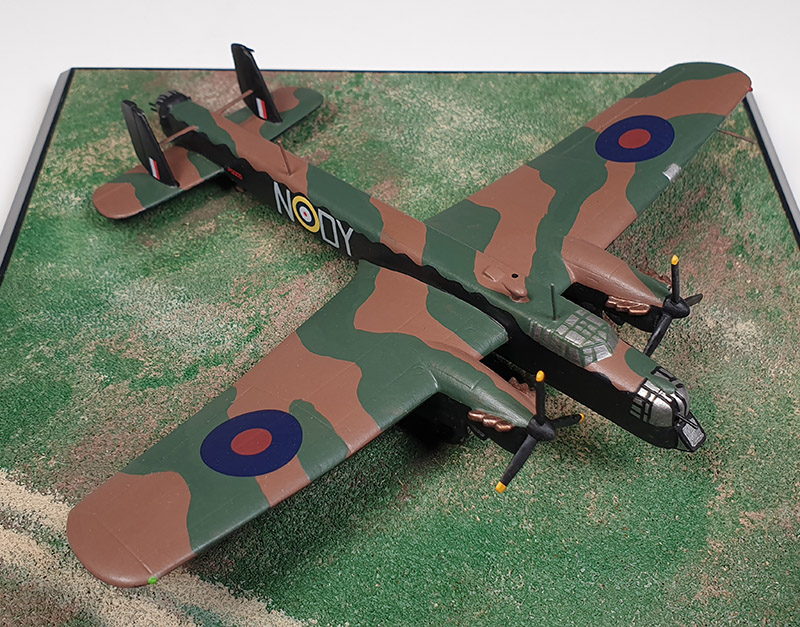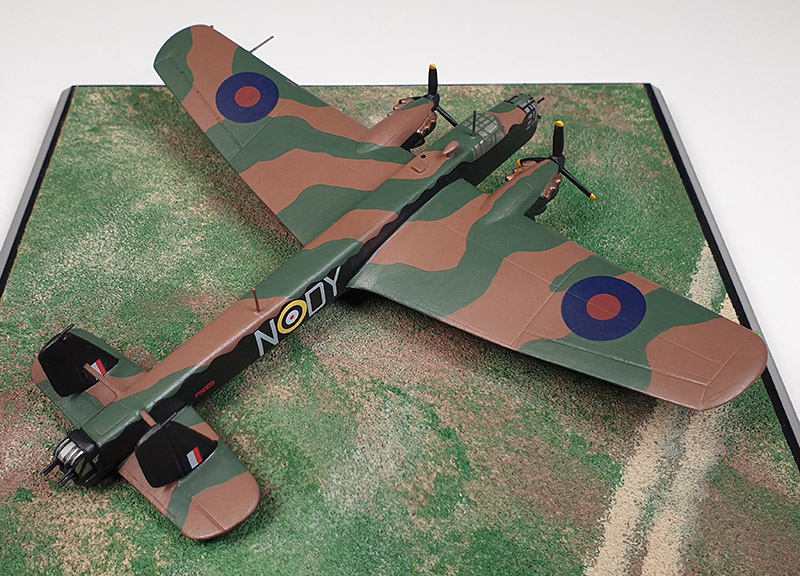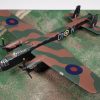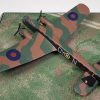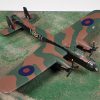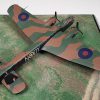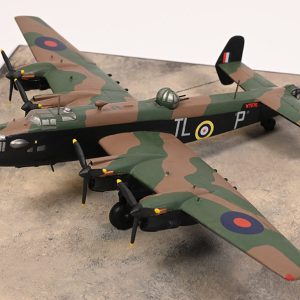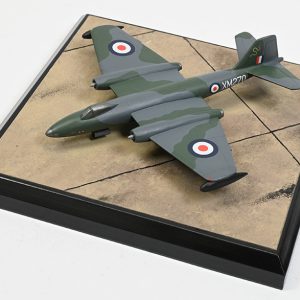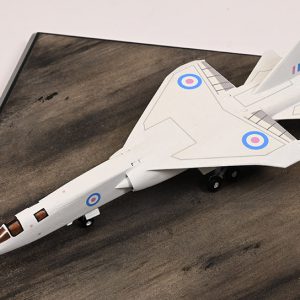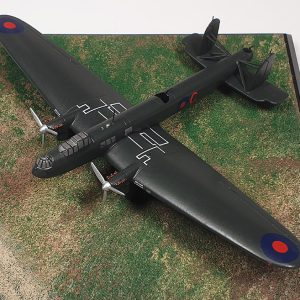Armstrong Whitworth Whitley Mk V P5005 DY-N, 102 Squadron,
Plt.Off. L Cheshire, Linton-on-Ouse/Topcliffe, November 1940.
The Armstrong Whitworth Whitley was produced in response to Air Ministry specification B.4/34, and first flown on 17th March 1936. In the previous year it had been the first aircraft for the RAF to be ordered “off the drawing board”; the policy had previously been to assess the performance of a prototype before placing a production contract, but the view of the international situation had lent a new urgency to the British re-armament programme. The Whitley, easily recognisable by its nose-down attitude in flight because of the positive incidence of its wing, was to have an unexpectedly long service life, with progressive modifications and improvements, was at the outbreak of World War II the heaviest of the three bombers available to the Royal Air Force. Its early lower-power radial engines had been replaced by the Rolls-Royce Merlin in the Mk IV, which also had a Frazer-Nash power-operated tail turret in place of a manual one, as well as more fuel and an improved bomb-aimer’s position; it was this version that introduced the characteristic chin glazing.
The Whitley Mk V was given a small increase in length, and revised fins, and 1,466 were built, more than any other mark; P5005 was from the second contract batch of this mark, ordered in November 1938. 102 Squadron had replaced its Heyfords with Whitley IIIs in October 1938 and received Whitley Mk Vs in November 1939. and in October 1940 returned from a detachment to Coastal Command to Yorkshire to resume bomber duties.
On the night of 12/13 November Whitley Mk V P5005, DY-N, took off with a target of an oil refinery at Wesseling, near Cologne; the captain was Pilot Officer Leonard Cheshire. Although he arrived at the target on ETA, he was unable to confirm the aircraft’s position for about twenty minutes because of intercom trouble, and by then it was covered by cloud. Cheshire decided to attack the railway marshalling yards at Cologne instead, but while approaching the target the aircraft was shaken by a series of violent explosions and filled with black smoke, with one of its own flares being set off by shrapnel from ground fire which also caused a large hole in the port side of the fuselage just aft of the wing root. The aircraft lost two thousand feet with the fuselage on fire before Cheshire regained control, and he was able to bring it back to base after eight and a half hours in the air. He was awarded an immediate DSO, and later a DFC for operations with 102 Squadron.
While its first “raids” over Germany were restricted to leaflet dropping, in that role the Whitley was the first RAF aircraft to fly over Berlin. It was also the first to drop bombs on mainland Germany, following the invasion of the Low Countries. The Whitley’s last operation with Bomber Command was at the end of May 1942, but it continued to serve with Coastal Command and as glider tug and transport, notably with Special Duties squadrons.
Leonard Cheshire went on to have a distinguished career in the RAF, being awarded the VC and subsequently being the British observer when the second atomic bomb was dropped on Nagasaki, and after the war setting up the Cheshire Homes, initially for disabled ex-servicemen.


